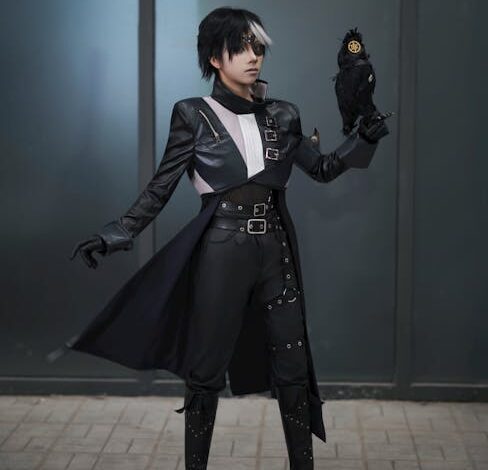Why 360 Cameras Are a Game-Changer for Content Creation

Remember that feeling when you look back at a stunning photo of a breathtaking landscape, only to realize you completely missed the charming detail to your left, or the incredible sunset unfolding just behind you? It’s a common frustration, a subtle reminder that even our best efforts can only capture a sliver of the full experience. What if you could capture *all* of it? Every angle, every fleeting moment, simultaneously?
That’s precisely the magic of 360 cameras. These ingenious devices are no longer just niche gadgets for tech enthusiasts; they’ve matured into powerful storytelling tools. They offer a unique perspective, allowing you to not just document a scene, but to immerse viewers (or yourself, later on) directly into it. From sprawling travel vistas to dynamic action sequences and even practical applications like real estate tours, 360 cameras are fundamentally changing how we record and share our world.
As we step into 2025, the technology has never been more refined, user-friendly, or capable. We’ve put the leading contenders through their paces, from their build quality to their post-production capabilities, to bring you our tested and reviewed list of the best 360 cameras available this year. So, whether you’re a seasoned content creator, an adventurous traveler, or simply curious about capturing life in a whole new dimension, let’s dive into what makes these cameras truly special.
Why 360 Cameras Are a Game-Changer for Content Creation
At first glance, a 360 camera might seem like a bit of a novelty. Point it, shoot, and you’ve got a spherical image. But the real power of these devices lies not just in capturing everything, but in what you can *do* with that comprehensive capture. They’re less about fixed frames and more about creating a canvas from which you can paint any narrative you choose.
Imagine vlogging a busy street market. With a traditional camera, you have to choose between your face, the vendor, or the bustling crowd. A 360 camera captures it all. Later, in editing, you can pan and zoom through that captured sphere, effectively creating multiple traditional video clips from a single recording. This “reframing” capability is a superpower for content creators, minimizing missed shots and maximizing creative freedom.
For adventurers, a 360 camera mounted on a helmet or drone offers an unparalleled sense of immersion. Your viewers aren’t just watching your skydiving jump; they’re experiencing the freefall from every angle. For real estate agents, it transforms static photos into interactive virtual tours. It’s a fundamental shift from capturing a moment to capturing an entire environment, opening up new frontiers for storytelling, education, and entertainment.
Key Features That Define a Top-Tier 360 Camera in 2025
When you’re looking to invest in a 360 camera, it’s easy to get lost in the specs. However, based on our extensive testing and understanding of user needs, a few core features consistently stand out as critical indicators of performance and usability.
Image Quality and Resolution: Beyond the Numbers
While marketing often touts 5.7K, 8K, or even higher resolutions, it’s not just about the raw pixel count. Crucially, the quality of the stitching – how the images from multiple lenses are seamlessly blended – makes all the difference. Poor stitching can lead to visible lines, distortion, or blurred seams, breaking the immersion. We look for cameras that produce sharp, vibrant images with excellent dynamic range and intelligent stitching algorithms that disappear into the background.
Low-light performance is another area where top cameras distinguish themselves. While tiny lenses will always have limitations, the best models utilize advanced sensors and processing to deliver usable footage even when the sun isn’t cooperating. This is especially vital for capturing indoor scenes or those magical twilight moments.
Stabilization: The Smoother, The Better
This is arguably the most crucial feature for any action or movement-based 360 footage. Imagine riding a bike, skiing down a slope, or even just walking and talking – without exceptional in-camera stabilization, your footage would be an unwatchable, nauseating mess. Companies like Insta360 with their “FlowState” stabilization and GoPro’s “HyperSmooth” have set incredibly high bars. A truly great 360 camera makes even the most aggressive movements look silky smooth, as if shot on a professional gimbal.
Durability and Design: Built for Adventure
Many 360 camera users are adventurers, so ruggedness is non-negotiable. Waterproofing, robust construction, and lens protection are key. The best cameras feel solid in hand, ready to withstand drops, splashes, and the rigors of the outdoors without needing an additional housing for every little adventure. Modularity, allowing for lens guards or battery swaps, also adds significant value.
Software and Workflow: The Real Magic Happens Here
Capturing the 360 footage is only half the battle; editing it is where the real creativity unfolds. A camera is only as good as its accompanying app and desktop software. We prioritize systems that offer intuitive reframing tools, easy horizon leveling, intelligent subject tracking, and quick export options for various platforms. The ability to seamlessly connect to your phone for quick edits and shares is a huge bonus, transforming complex post-production into a streamlined, enjoyable process.
Our Top Picks: The Best 360 Cameras of 2025
Based on our extensive hands-on testing and evaluation against the criteria above, here are the categories of 360 cameras that stand out for 2025, offering a blend of innovation, performance, and user experience. While specific model names evolve rapidly, these categories represent the pinnacle of what you can expect from leading manufacturers.
The All-Rounder Champion: Versatility Meets Performance
This category belongs to cameras that offer the best balance for most users. They typically boast high-resolution capture (e.g., 5.7K at 30fps or 8K at slightly lower frame rates), industry-leading stabilization, and a user-friendly app that makes reframing and sharing a breeze. Think excellent photo capabilities, robust build quality, and a fantastic ecosystem of accessories. These are often the cameras we reach for when we need a reliable workhorse for travel, vlogging, and casual action sports. Their ability to deliver stunning results with minimal fuss is their greatest strength.
The Professional Powerhouse: Pushing the Boundaries
For those who demand the absolute best in image quality, dynamic range, and advanced features, the professional-grade 360 cameras are in a league of their own. These devices often feature larger sensors, higher resolutions (8K and above), and more granular control over settings. They might come with modular designs, allowing for specialized lenses or enhanced audio inputs. While they command a higher price point and often require a more involved post-production workflow, the cinematic results speak for themselves. These are the tools for immersive film projects, high-end virtual tours, and serious content creators.
The Pocket Companion: Simplicity and Portability
Sometimes, the best camera is the one you have with you. This category focuses on ultra-compact, easy-to-use 360 cameras that still deliver surprisingly good results. They might not match the professional powerhouses in every spec, but their portability, instant-share capabilities, and often more accessible price point make them perfect for spontaneous moments, quick social media updates, or users who prioritize convenience. They prove that you don’t need a huge setup to capture a full, immersive view of your world.
Making the Most of Your 360 Camera
Getting a great 360 camera is just the beginning. To truly unlock its potential, here are a few quick tips:
- Embrace the Invisible Selfie Stick: This is a game-changer. It makes the camera appear to float, creating incredible third-person perspectives without a visible pole.
- Experiment with Reframing: Don’t just export spherical video. Use the editing software to “punch out” traditional, flat videos with dynamic camera movements from your 360 footage. It’s like having a camera crew with you.
- Look Up, Look Down: The “tiny planet” and “rabbit hole” effects are unique to 360 cameras and can create incredibly striking still images or video intros.
- Think About Placement: Since it captures everything, consider where the camera itself is positioned. On a helmet for an immersive POV, on a tripod for a stable scene, or low to the ground for a dramatic effect.
Beyond the Frame: A New Dimension of Storytelling
The best 360 cameras of 2025 are more than just advanced pieces of tech; they are catalysts for creativity. They remove the anxiety of missing a shot, empower dynamic storytelling, and invite viewers into your world in a way traditional cameras simply can’t. They remind us that our world isn’t flat, and neither should our memories be.
Whether you’re chronicling epic journeys, creating engaging content, or simply preserving family moments with an unprecedented level of detail, choosing the right 360 camera will open up a new dimension of possibilities. Go forth, explore, and capture every angle of your amazing life.





